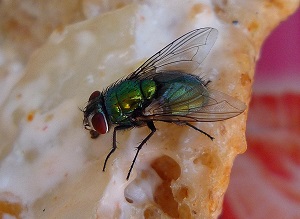![]() Contamination Risks in the Food Supply is a news and information topic monitored and covered by: Prepper Watch – Food Concerns
Contamination Risks in the Food Supply is a news and information topic monitored and covered by: Prepper Watch – Food Concerns
Introduction
The global food supply faces numerous risks, many of which are tied to industrial farming practices that have revolutionized the way food is produced but also increased the likelihood of contamination. Pathogens and chemical contaminants, from pesticides to heavy metals, are widespread in conventionally farmed food products. For preppers, understanding these risks and taking steps to mitigate them is crucial for ensuring food security in the event of a crisis. In this blog, we’ll explore how preppers can prepare for contamination risks in the food supply, emphasizing strategies for ensuring safe, clean, and sustainable food sources.
The Threat of Contamination in the Industrial Food System
Industrial farming practices have brought many efficiencies to food production, but they also pose significant risks in terms of contamination. The mass production of crops and livestock has led to the widespread use of chemical fertilizers, pesticides, antibiotics, and hormones. These substances, while improving yield and controlling pests, can leave harmful residues that end up in the food supply. Moreover, crowded farming conditions create ideal environments for the spread of pathogens like E. coli, Salmonella, and Listeria.
Pathogen Contamination: Contaminants such as bacteria, viruses, and fungi can enter the food supply through improper handling, poor hygiene, or contaminated water sources. Pathogen outbreaks often occur in high-density livestock operations, where animals are confined to small spaces, increasing the risk of disease transmission. The spread of such pathogens can lead to severe foodborne illnesses, which could be disastrous during times of food scarcity or crisis.
Chemical Contamination: Chemicals in the form of pesticides, herbicides, and synthetic fertilizers are commonly used in industrial farming. While these chemicals increase crop yields and reduce the need for manual labor, their presence in food products raises concerns about long-term health effects. Pesticide residues are especially concerning because they are often difficult to remove through normal washing or cooking processes. Heavy metals such as lead, mercury, and arsenic can also accumulate in the soil and water used to grow crops, ultimately making their way into the food supply.
Understanding the Risks of Industrial Farming
To better prepare for contamination risks, it’s essential to understand the specific risks that arise from industrial farming practices.
- Pesticide and Herbicide Contamination: The widespread use of chemical pesticides and herbicides is one of the most significant risks in the industrial food system. These chemicals are used to protect crops from pests and weeds, but they often leave harmful residues in the food supply. Washing and peeling fruits and vegetables can reduce, but not eliminate, the presence of these chemicals. Over time, exposure to pesticides has been linked to various health problems, including cancer, reproductive issues, and neurological disorders.
- Antibiotic and Hormone Use in Livestock: In industrial farming, livestock are often administered antibiotics and growth hormones to promote rapid growth and prevent disease in crowded conditions. These practices have raised concerns about antibiotic resistance, where bacteria evolve to become resistant to drugs, making infections harder to treat. Furthermore, the use of hormones to stimulate growth in livestock can lead to the presence of synthetic hormones in meat, which may have negative health effects on humans.
- Pathogen Risks in Factory Farms: Factory farms, particularly those raising large numbers of animals in close quarters, are breeding grounds for disease. Animals in these environments are often stressed, which weakens their immune systems and makes them more susceptible to infections. Pathogens such as Salmonella, E. coli, and Campylobacter can easily spread in such environments, contaminating the meat and dairy products produced. Inadequate hygiene and poor handling practices can further increase the likelihood of contamination reaching consumers.
The Importance of Building Food Resilience
As preppers, the goal is not just to survive in times of crisis but to thrive. This means securing reliable and safe food sources that are not reliant on the industrial food system. By taking proactive steps to reduce contamination risks, preppers can ensure they have access to clean, nutrient-dense food regardless of what happens in the outside world.
Self-Sufficiency Through Gardening: Growing your own food is one of the most effective ways to avoid contamination risks from industrial farming. When you grow your own fruits, vegetables, and herbs, you have complete control over the cultivation process, from soil quality to pest control. Organic gardening practices, which avoid synthetic pesticides and fertilizers, can help minimize chemical exposure and ensure that your food is safe to eat.
Permaculture and Companion Planting: Permaculture is a sustainable farming method that aims to mimic natural ecosystems. It focuses on building a self-sustaining system that requires minimal intervention. By using companion planting techniques, preppers can naturally repel pests and encourage the growth of beneficial plants without relying on chemical pesticides.
Hydroponics and Aquaponics: For those without land or limited space, hydroponics and aquaponics provide viable alternatives. These soil-less growing methods use water and nutrient solutions to grow plants indoors or in controlled environments. These systems can be used to grow a variety of vegetables and herbs, and aquaponics additionally provides a sustainable source of protein through fish farming.
Stockpiling Safe, Non-Contaminated Foods
While growing your own food is an excellent way to ensure safety, having a well-stocked pantry is equally important for any prepper. When choosing food to store, it’s essential to select items that have been minimally processed and are less likely to contain harmful chemicals or pathogens.
- Organic and Non-GMO Foods: When buying food for long-term storage, consider purchasing organic and non-GMO products. Organic certification means that the food has been grown without synthetic pesticides, herbicides, or chemical fertilizers. Non-GMO foods are also free from genetically modified organisms, which may be altered in ways that affect their nutritional content or introduce unintended risks.
- Freeze-Dried and Dehydrated Foods: Freeze-dried and dehydrated foods are excellent options for long-term food storage. These foods retain most of their nutrients and can be stored for years without refrigeration. Look for freeze-dried or dehydrated options that are free from additives, preservatives, and artificial flavorings, which can add to your exposure to chemicals.
- Canned and Preserved Foods: Canning and preserving your own food can be a great way to avoid contamination risks. Many preppers choose to can fruits, vegetables, meats, and even dairy products for long-term storage. By canning your own food, you can ensure it is free from chemical preservatives and additives, giving you peace of mind that it is safe to eat.
- Selecting Clean Protein Sources: Animal products such as meat, eggs, and dairy can carry contamination risks, especially if they come from factory farms. When possible, choose sustainably raised, antibiotic-free, and hormone-free sources of protein. Look for grass-fed beef, free-range poultry, and pasture-raised eggs. For preppers who have access to land, raising your own livestock can provide a direct source of clean, safe protein.
Water Safety: Protecting Against Contaminants
Water is another critical element in food preparation and food safety. In a disaster scenario, access to clean water may be limited, and contaminants from industrial farming runoff, such as pesticides and heavy metals, could threaten the safety of local water supplies.
- Filtration and Purification: Investing in high-quality water filtration systems is one of the most effective ways to ensure that your water remains clean. Look for filters that can remove a wide range of contaminants, including chlorine, heavy metals, and pesticides. Reverse osmosis filters and activated charcoal filters are excellent options for purifying water, especially if it comes from questionable sources.
- Rainwater Harvesting: For those with access to a suitable roof and storage system, harvesting rainwater can be a sustainable and clean source of water. Rainwater is generally free from many of the contaminants found in municipal water systems, but it still requires filtration and purification to ensure it is safe to drink and use for food preparation.
Food Safety in Storage and Preparation
Even if you have access to uncontaminated food, proper storage and preparation methods are crucial for maintaining its safety and quality.
- Proper Storage: Food should be stored in cool, dry, and dark places to prevent spoilage and contamination. Store dry goods such as rice, beans, and grains in airtight containers to protect them from pests and moisture. Ensure that canned and preserved foods are kept in a temperature-controlled environment to avoid spoilage or contamination from leaching.
- Temperature Control: Perishable foods, such as dairy and meats, should always be stored at the proper temperature to prevent bacterial growth. A backup power source, such as a solar-powered refrigerator or freezer, can be invaluable during times of power outages or grid failure.
- Safe Food Handling: When preparing food, always wash your hands and sanitize utensils and surfaces to avoid cross-contamination. Cook foods to the recommended temperature to kill any harmful pathogens. If you’re unsure about a food’s safety, err on the side of caution and dispose of it to avoid the risk of illness.
Alternative Food Sources for Preppers
While growing your own food and stockpiling safe products are essential strategies, preppers should also explore alternative food sources in the event that traditional supplies are contaminated or unavailable.
- Foraging for Wild Foods: Wild foraging is an excellent way to supplement your food supply with nutrient-dense, free-range options. Learn to identify wild edible plants, mushrooms, and insects, as these can provide a sustainable and often overlooked food source. Make sure to educate yourself on proper identification techniques to avoid consuming harmful or toxic plants.
- Hunting and Fishing: Hunting and fishing can provide a direct source of protein without relying on the industrial food system. However, it’s important to ensure that the animals you hunt or the fish you catch are free from contaminants such as mercury or lead. Focus on areas with clean water and natural ecosystems to reduce the risk of chemical exposure.
Mental and Emotional Resilience
Preparing for food contamination risks isn’t just about physical readiness; mental and emotional resilience are equally important. During times of crisis, food insecurity can create stress and anxiety, but preppers who are well-prepared will be able to remain calm and focused.
- Planning for Sustainability: Create a plan that includes diverse food sources and strategies for dealing with food contamination risks. This plan should involve multiple layers of food security, including growing your own food, sourcing from sustainable farmers, and having emergency rations on hand.
- Community Building: Being part of a prepper community or mutual assistance group (MAG) can help reduce the stress of food insecurity. Sharing resources, skills, and knowledge with others can create a safety net and reduce reliance on industrial systems.
Responding to a Contamination Event
In the event of a contamination crisis, it’s essential to respond swiftly and decisively.
- Monitor Information Sources: Stay informed about food safety issues by monitoring trusted news outlets, government updates, and food safety agencies. Having reliable information will allow you to make informed decisions about food sourcing and safety.
- Implement Contingency Plans: If contamination risks are discovered in the food supply, implement your contingency plans by turning to your stored food, local sources of clean food, or alternative food production systems.
Conclusion
Contamination risks in the food supply are a growing concern, particularly in light of industrial farming practices that increase the likelihood of chemical residues and pathogens. Preppers who are proactive in securing clean, safe, and sustainable food sources will be better prepared for food-related crises.
By building resilience through gardening, stockpiling safe foods, and adopting alternative food sources, preppers can reduce their reliance on the industrial food system and ensure their long-term food security.

